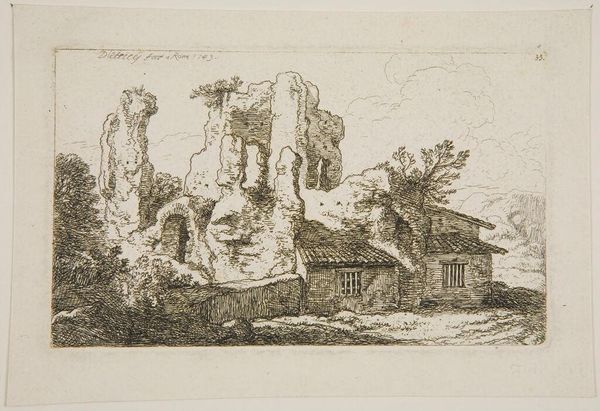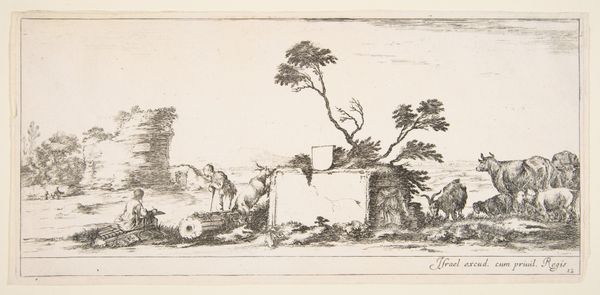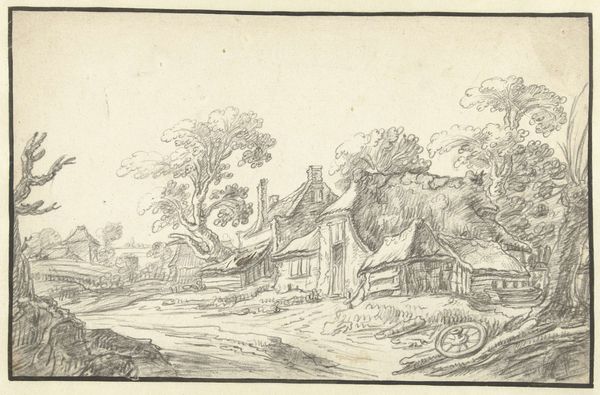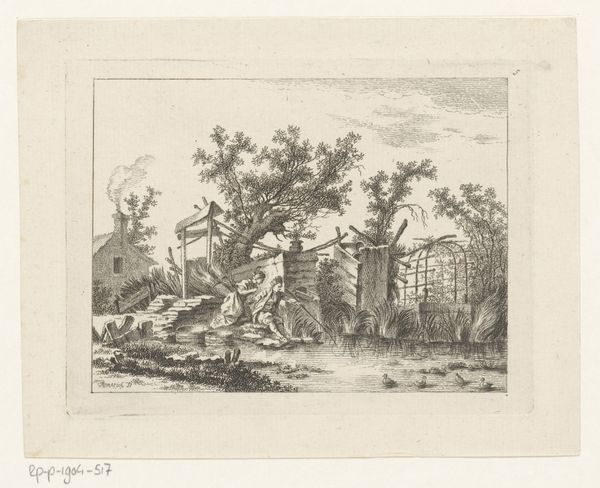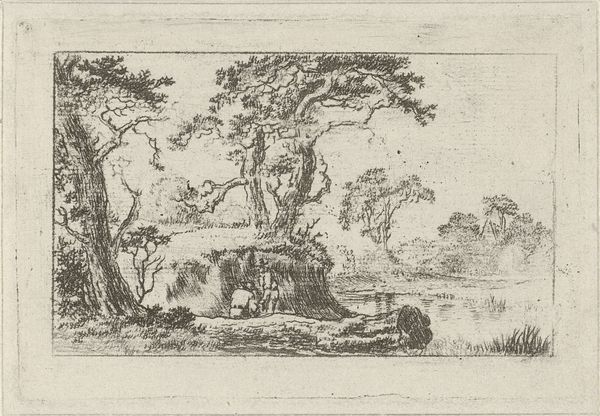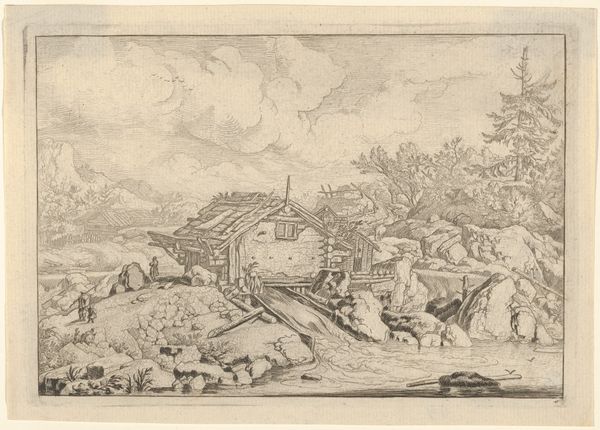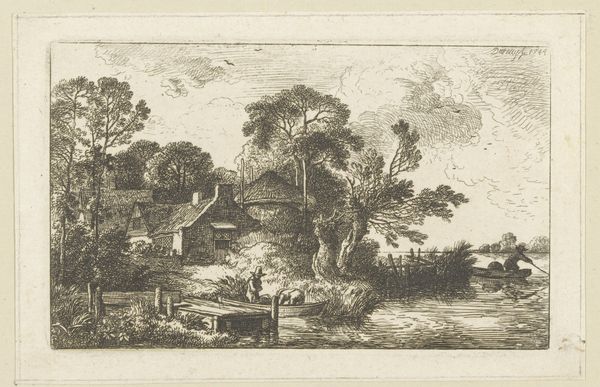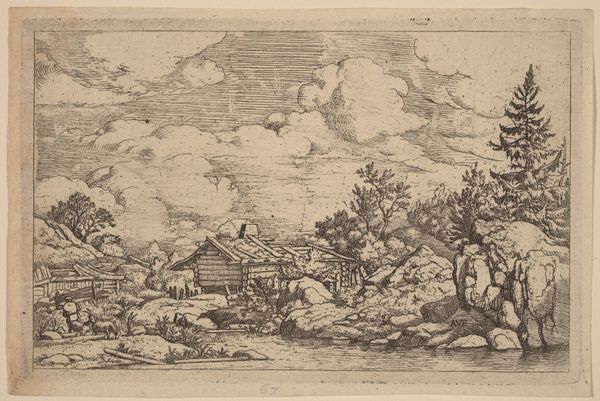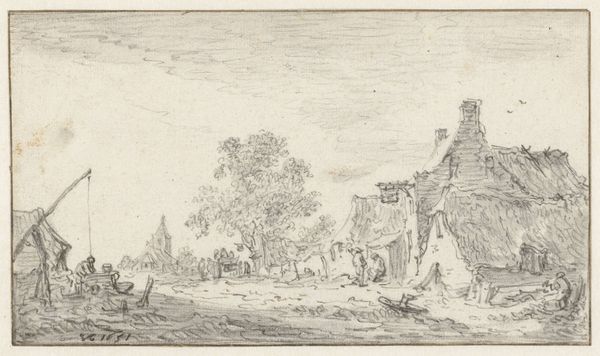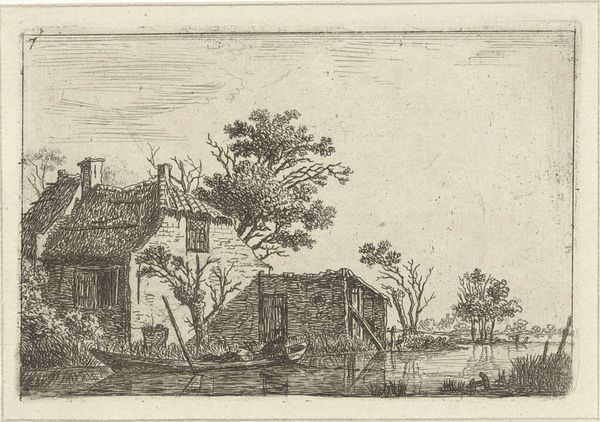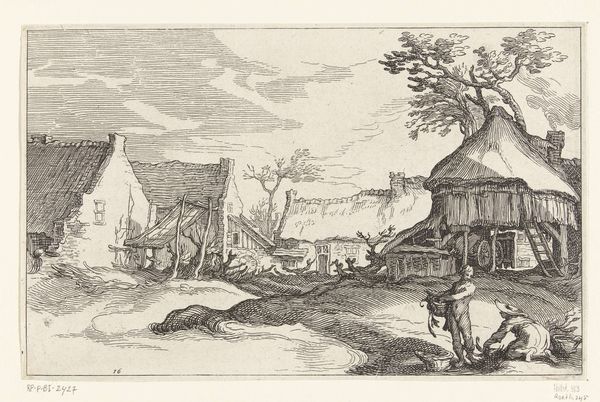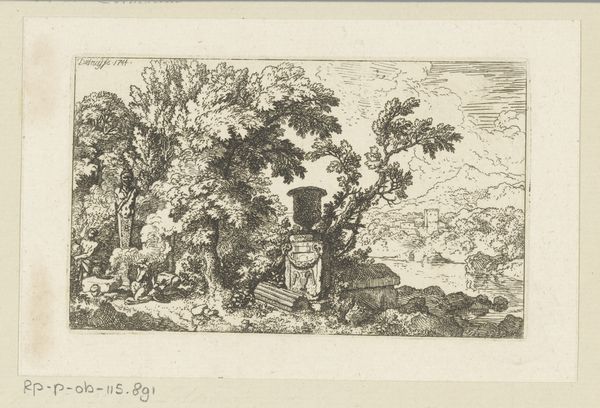
drawing, print, etching, architecture
#
drawing
#
aged paper
#
toned paper
#
light pencil work
#
baroque
# print
#
etching
#
pencil sketch
#
old engraving style
#
landscape
#
etching
#
form
#
personal sketchbook
#
ink drawing experimentation
#
line
#
sketchbook drawing
#
pencil work
#
architecture
Dimensions: height 80 mm, width 135 mm
Copyright: Rijks Museum: Open Domain
Curator: Here we have Christian Wilhelm Ernst Dietrich's "Landschap met in ruïne gebouwde woning," a landscape scene rendered in etching and dating back to 1743. It’s part of the Rijksmuseum's collection. Editor: My initial impression is that this piece evokes a feeling of melancholy. The aged paper lends a kind of ghostly quality to the dilapidated structure. Curator: The use of etching provides fine, delicate lines, especially noticeable in the architectural details. You can see a conscious manipulation of the material to represent textures, such as crumbling stone and rough-hewn timber. The printmaking process itself – the labor, the acid, the press – adds a layer of meaning related to reproduction and access to images in the 18th century. Editor: I'm immediately drawn to the ruined building itself, though. The image brings forth thoughts about the cyclical nature of time. Note how nature reclaims man-made structures. It also reminds us of similar ruins represented during the rise of the Grand Tour. There is a symbolic power here, reflecting ideas of mortality. Curator: I’d agree about the reclaiming aspect. Etching as a method would have allowed for relatively efficient creation and dissemination, providing imagery to a broader consumer base hungry for visuals, particularly ones tied to the past and narratives of ruin. How many impressions like this exist, circulated amongst consumers of imagery? That circulation and consumption becomes critical for the artwork's total image. Editor: Look closer. Embedded in those ruins and landscape are layers of cultural significance; the architecture embodies power, decay, and resilience. The foliage entwined throughout the stones represents the regenerative force of nature, in stark contrast to civilization. This could very well act as a *memento mori* too. Curator: Absolutely. So considering that memento mori tradition, perhaps Dietrich intended to remind the owner of this print of their position, and its potential change? Ultimately the landscape persists and, from a materialist perspective, outlasts us. Editor: Yes, ultimately it does lead me to consider the human experience through a potent mix of imagery and the allegorical landscape tradition. It serves as a visual reminder of ephemeral nature and inevitable decline. Curator: Indeed, both the process of making this print and the symbolic content force reflection, whether on materials or mortality. Editor: A very fitting observation for this poignant artwork.
Comments
No comments
Be the first to comment and join the conversation on the ultimate creative platform.
